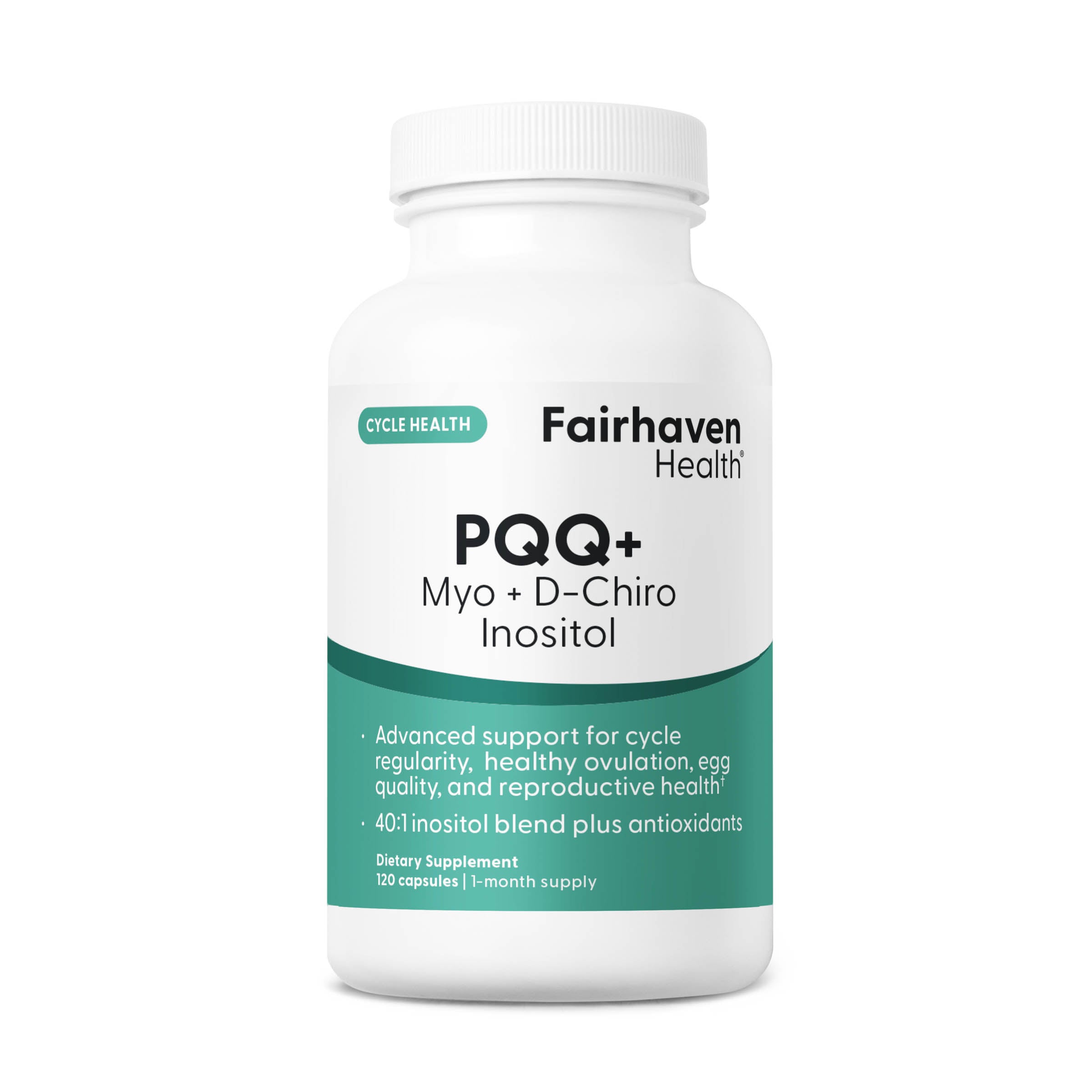 An infertility diagnosis or prolonged, unsuccessful efforts to have a baby can cause stress, anxiety, and depression at levels equal to those found in women diagnosed with heart disease, metastatic cancer, or HIV infection.1 Scientific studies show that this stress negatively affects the reproductive hormone axis of both men and women, making it even more difficult for couples to conceive.2,3,4 New research shows that yoga and other mind-body integration techniques can serve as antidotes to the harmful effects of stress on the reproductive hormone axis. In this way, mind-body integration techniques promote optimal reproductive health.14,16,19 We review the data here.
An infertility diagnosis or prolonged, unsuccessful efforts to have a baby can cause stress, anxiety, and depression at levels equal to those found in women diagnosed with heart disease, metastatic cancer, or HIV infection.1 Scientific studies show that this stress negatively affects the reproductive hormone axis of both men and women, making it even more difficult for couples to conceive.2,3,4 New research shows that yoga and other mind-body integration techniques can serve as antidotes to the harmful effects of stress on the reproductive hormone axis. In this way, mind-body integration techniques promote optimal reproductive health.14,16,19 We review the data here.
Stress triggers a coordinated change in physiology that scientists refer to as the “stress response”. The chronic psychological stress associated with infertility triggers a stress response just like the one triggered by physical (injury or overuse) or emotional (fear of life threatening danger) stress. In all of these cases, stress activates both the hypothalamic-pituitary-adrenal axis (HPA) and the sympathetic arm of the autonomic nervous system (ANS) to release “stress hormones”. These stress hormones, which include cortisol, ACTH, norepinephrine and epinephrine, shift behavior and physiology to increase the odds of survival in the face of an immediate threat. Stress hormones increase heart rate, blood pressure, respiration rate, blood flow to muscles and metabolic rate. These same hormones shut down reproduction, digestion and growth, systems not needed for the response to an immediate threat.2,5,6,13
When stress diminishes, the stress response turns off, stress hormone levels fall and the body quickly recovers and returns to balance (homeostasis). However chronic stress like that associated with infertility, leads to a sustained release of stress hormones. Scientists report that chronic high levels of stress hormones negatively impact overall health, increase susceptibility to disease (e.g. heart disease, diabetes, autoimmune disease) and significantly disrupt reproduction. This sets up an unfortunate cycle where the stress of infertility further disrupts reproduction making it even more difficult for infertile couples to conceive.4,5,6,7
Stress hormones disrupt hormone release from each level of the reproductive hormone axis (hypothalamus, pituitary and gonads - HPG axis). In men, stress hormones disrupt testosterone and sperm production (semen quality, sperm concentration and sperm motility), decrease the desire to reproduce and make it more difficult for men to get erections. In women, stress hormones disrupt egg maturation, ovulation, and the physiological changes that support embryo implantation, placenta formation, pregnancy and childbirth, as well as reducing the desire to reproduce.6,7
Lifestyle choices can reduce stress. Research shows that mind-body integration practices like yoga and its companion practice meditation, can reduce the perception of stress as well as lower stress hormone levels. Several reports show that yoga and meditation decrease blood levels of cortisol, ACTH, norepinephrine and epinephrine.9,10,11,12 As stress hormone levels fall, the body returns to hormonal balance and reproductive health may be restored.
Mind body integration techniques work their magic in part by triggering a change in physiology called the “relaxation response” discovered by Harvard cardiologist Dr. Herbert Benson in the early 1970’s.13 In contrast to the stress response, which is an automatic physiological response to threat, the “relaxation response” requires conscious activation and therefore must be learned. To turn on the relaxation response, attention must consciously shift to a focal point (like breath). Every time the mind starts to wander to stressful thoughts like “Will I get pregnant this month?” or “Will I meet my deadline at work?” attention must be redirected back to the focal point.
The “relaxation response” triggers the release of hormones that in many instances oppose the actions of stress hormones at target tissues. For example, relaxation response hormones (released from the parasympathetic arm of the autonomic nervous system) reduce muscle tension, decrease respiration rate, heart rate, blood pressure and metabolism. By triggering, the “relaxation response” yoga and other mind-body integration techniques return a “stressed out” body to a more “relaxed” and balanced state. Regular yoga and meditation practitioners report an overall feeling of well-being and a better ability to cope with stress.13,14,15
 Scientists have used their understanding of the physiology of stress and relaxation to help couples with reproductive challenges. In one study Dr. Sarah Berga, a scientist at Emory University, improved the reproductive health of women with anovulatory amenorrhea, a condition where women stop ovulating and stop having regular periods. These women also have high levels of the stress hormone cortisol in their brain fluid. After learning stress management tools (mind-body integration techniques, cognitive restructuring and positive imagery), stress hormone levels dropped, and in 7 out of 8 women normal reproductive hormone cycling and ovulation was restored, compared with 2 out of 8 women in a control group.16,17,18
Scientists have used their understanding of the physiology of stress and relaxation to help couples with reproductive challenges. In one study Dr. Sarah Berga, a scientist at Emory University, improved the reproductive health of women with anovulatory amenorrhea, a condition where women stop ovulating and stop having regular periods. These women also have high levels of the stress hormone cortisol in their brain fluid. After learning stress management tools (mind-body integration techniques, cognitive restructuring and positive imagery), stress hormone levels dropped, and in 7 out of 8 women normal reproductive hormone cycling and ovulation was restored, compared with 2 out of 8 women in a control group.16,17,18
Another groundbreaking study published by Harvard researcher Alice Domar, Ph.D. showed that infertile couples could boost their conception rates by participating in a mind-body fertility program where they learned mind-body integration techniques to elicit the “relaxation response”, received healthy lifestyle training (nutrition, exercise, and sleep), completed cognitive behavioral therapy exercises and acted as support for each other. In this study of 184 women conception rates (live births) were boosted to 55% for the 10 week mind-body training group compared to 20% for a control group when assessed one year after the training.19,20,21 Whether couples eventually conceived naturally or with assistance from reproductive technologies, by participating in the mind-body training group their conception rates were boosted compared with controls.
Mind-body fertility programs that replicate Dr. Domar’s curriculum are helping couples conceive across the country. For example, Rahul Sachdev, M.D., a Reproductive Endocrinology and Infertility specialist who teaches at the Robert Wood Johnson Medical School in Edison, NJ, Leslee Kagan who teaches the Mind-Body Fertility program at Harvard’s Benson-Henry Institute in Boston, MA, and Carol Knoph who teaches a Mind-Body Fertility program in Seattle, WA, report conception rate increases of greater than 50% for couples participating in their Mind-Body Fertility programs.
There is additional evidence that stress management tools like yoga help couples receiving assistance from reproductive technologies.22,23,24 Lower stress hormones correlated with higher in vitro success rates. In a study of 151 women undergoing in vitro fertilizations, the chance of live birth was 93% higher for women who were the least stressed and least depressed as rated on behavioral tests (high positive affect score).22In another study, women undergoing IVF-ET (in vitro fertilization- embryo transfer) with the highest stress markers (high level of activated T-cells) had reduced implantation rates.25
In many different studies data support the observation that infertility related stress has direct and indirect effects on conception rates. Practicing yoga and other mind-body integration techniques, getting support from community, having a positive outlook, and making healthy lifestyle choices can boost the chances of getting pregnant. The data show that giving stress management tools to couples with fertility challenges, could improve their overall reproductive health. However, it is important to note that in all the studies reviewed, not all couples were able to eventually conceive.19,20,21,25
More About Bend, Breathe and Conceive
 Bend, Breathe and Conceive is a gentle yoga practice that includes physical poses, breath modulation, guided meditation, visualization, and chanting. Specific physical poses that stretch, strengthen and bring awareness to the muscles surrounding the reproductive organs are included. These poses may reveal unconscious holding patterns and tension that can be consciously released to enhance feelings of receptivity, softening, and unfolding.
Bend, Breathe and Conceive is a gentle yoga practice that includes physical poses, breath modulation, guided meditation, visualization, and chanting. Specific physical poses that stretch, strengthen and bring awareness to the muscles surrounding the reproductive organs are included. These poses may reveal unconscious holding patterns and tension that can be consciously released to enhance feelings of receptivity, softening, and unfolding.
The Bend, Breathe and Conceive practice links breath with rhythmic movement using a technique called “vinyasa yoga”. Constant attention to breath triggers the “relaxation response” and helps keep attention focused in the present moment. Breath can also serve as an indicator of stress. Challenging standing poses may cause your breath to quicken, become shallow and less balanced. As you relax on your back, the breath deepens and inhalation and exhalation become balanced (rate and depth).
Several different yogic breathing techniques are part of the practice including: ujjayi pranayama (audible breath), nadi sodhana (alternate nostril or balancing breath), and brahmari (buzzing like a bee breath). These breathing techniques trigger the relaxation response, bring attention to the present moment and may help connect body, mind, and spirit.
Bend, Breathe and Conceive closes with a guided meditation (with visualizations) followed by a final relaxation called savasana. Our hope is that you use what you learn in Bend, Breathe and Conceive on your mat and also in your daily life off the mat.
Dr. Anna Davis, creator of Bend, Breathe and Conceive, teaches yoga for fertility, prenatal yoga, yoga for beginners and vinyasa yoga for all levels in Seattle, Washington. Dr. Davis incorporates her knowledge of physiology, love of movement, yoga practice and her life experience as a scientist and mother into her classes. She is grateful for the opportunity to share the health benefits of yoga with others.
References:
- Domar, A, Zuttermeister, P, Friedman, R. (1993) The psychological impact of infertility: a comparison with patients with other medical conditions. J. Psychosomatic Obstetric Gynaecology. 14: 45-52.
- Domar, A, Zuttermeister, P, Friedman, R. (1999) Distress and conception in infertile women: A complementary approach. J. of the American Medical Women's Association. 54:4.
- Cousineau, TM and Domar, AD. (2007) Psychological impact of infertility. Best Practice and Research Clinical Obstetrics and Gynecology. 21: 293- 308..
- Wasser, S, Sewal, G, & Soules, M. (1993) Psychosocial stress as a cause of infertility. Fertility and Sterility. 59: 685-689.
- Chrousus, GP, Torpy, DJ and Gold, PW. (1998) Interactions between the hypothalamic-pituitary-adrenal axis and the female reproductive system: clinical implications. Ann. Int. Med. 129: 229-240.
- Wingfield, JC and Sapolsky, RM. (2003) Reproduction and resistance to stress: when and how. J. of Neuroendocrinology. 15: 711-724.
- Kalantaridou, SN, Makrigiannakis, A, Zoumakis, E, and Chrousos, GP. (2004) Stress and the female reproductive system. J. Reproductive Immunology. 62: 61-68.
- Udupka, KN, Singh, RHSettiward, RM. (1975) Physiological and biochemical studies on the effect of yogic and certain other exercises. Indian J. Med. Res. 63: 620-624.
- Funderburk, J. (1977) Science Studies Yoga: A Review of Physiological Data. Glenview, IL: Himalayan International Institute
- Sudsuang, R, Chentanez, V, Veluvan, K. (1991) Effect of Buddhist meditation on serum cotrisol and total protein levels, blood pressure, pulse rate, lung volume and reaction time. Physiol. Behav. 50: 543-548.
- Schell, FJ, Allolio, B, Schonecke, OW. (1994) Physiological and psychological effects of Hatha yoga exercise in healthy women. Int. J. Psychosom. 41: 46-52.
- Harte, JL Eifert, GH, Smith, R. (1995) The effects of running and meditation on beta-endorphin, corticotropin releasing hormone and cortrisol in plasma on mood. Biol Psychol. 40: 251-265
- Benson, H. The Relaxation Response. New York: William Morrow 1975
- Esch, R, Fricchione, GL and Stefano, GB. (2003) The therapeutic use of the relaxation response in stress-related diseases. Med. Sci Monitor 9(2): RA 23-32
- Hoffman, JW, Benson, H, Arns, PA et al. (1982) Reduced sympathetic nervous system responsivity associated with the relaxation response. Science 190-192
- Berga, SL, Marcus, MD, Loucks, TL, Hlatala, S, Ringham R, Krohn, MA (2003) Recovery of ovarian activity in women with functional hypothalamic amenorrhea who were treated with cognitive behavior therapy. Fertility and Sterility 80(4): 976-981.
- Berga, SL Loucks, TL. (2005) The diagnosis and treatment of stress-induced anovulation. Minerva 57(1): 45-54.
- Brundu, B, Loucks, TL, Adler, LJ, Cameron, JL, Berga, SL. (2006) Increased cortisol in the cerebrospinal fluid of women with functional hypothalamic amenorrhea. Clin Endocrinol Metab. 91(4): 1561 – 5.
- Domar, A., Clapp, D., Slawsby, E., Dusek, J., Kessel, B., Freizinger, M (2000) Impact of group psychological interventions on pregnancy rates in infertile women. Fertility and Sterility 73(4): 805-811.
- Domar, A., Seibel, M., & Benson, H (1990) The Mind/Body Program for Infertility: A new treatment program for women with infertility. Fertility and Sterility 53: 246-249.
- Domar, A (1996) Stress and infertility in women: Is there a relationship? Division of Behavioural Medicine, Deaconess Hospital Mind/Body Institute, Harvard Medical School. Psychotherapy in Practice 2(2): 17-27.
- Cooper BC, Gerber, JR, McGettrick, AL, Johnson, JV. (2007) Perceived infertility-related stress correlates with in vitro fertilization outcome. Fertility and Sterility 88(3): 714-717.
- Facchinetti,F, MAtteo, ML, Artini, GP, Volpe, A, Genazzani, AR. (1997) An increased vulnerability to stress is associated with a poor outcome of in vitro fertilization-embryo transfer treatment. Fertility and Sterility 67(2): 309-314.
- Gallinelli,A, Roncaglia,R, MAtteo, ML, Ciaccio, I, Volpe, A and Facchinetti, F. (2001) Immunological changes and stress are associated with different implantation rates in patients undergoing in vitro fertilization-embryo transfer. Fertility and Sterility 76(1): 85 – 91.
- Matzuk, MM and Lamb, DJ. (2008) Biology of infertility: research advances and clinical challenges. Nature Medicine 14(11): 1197 – 1213.







